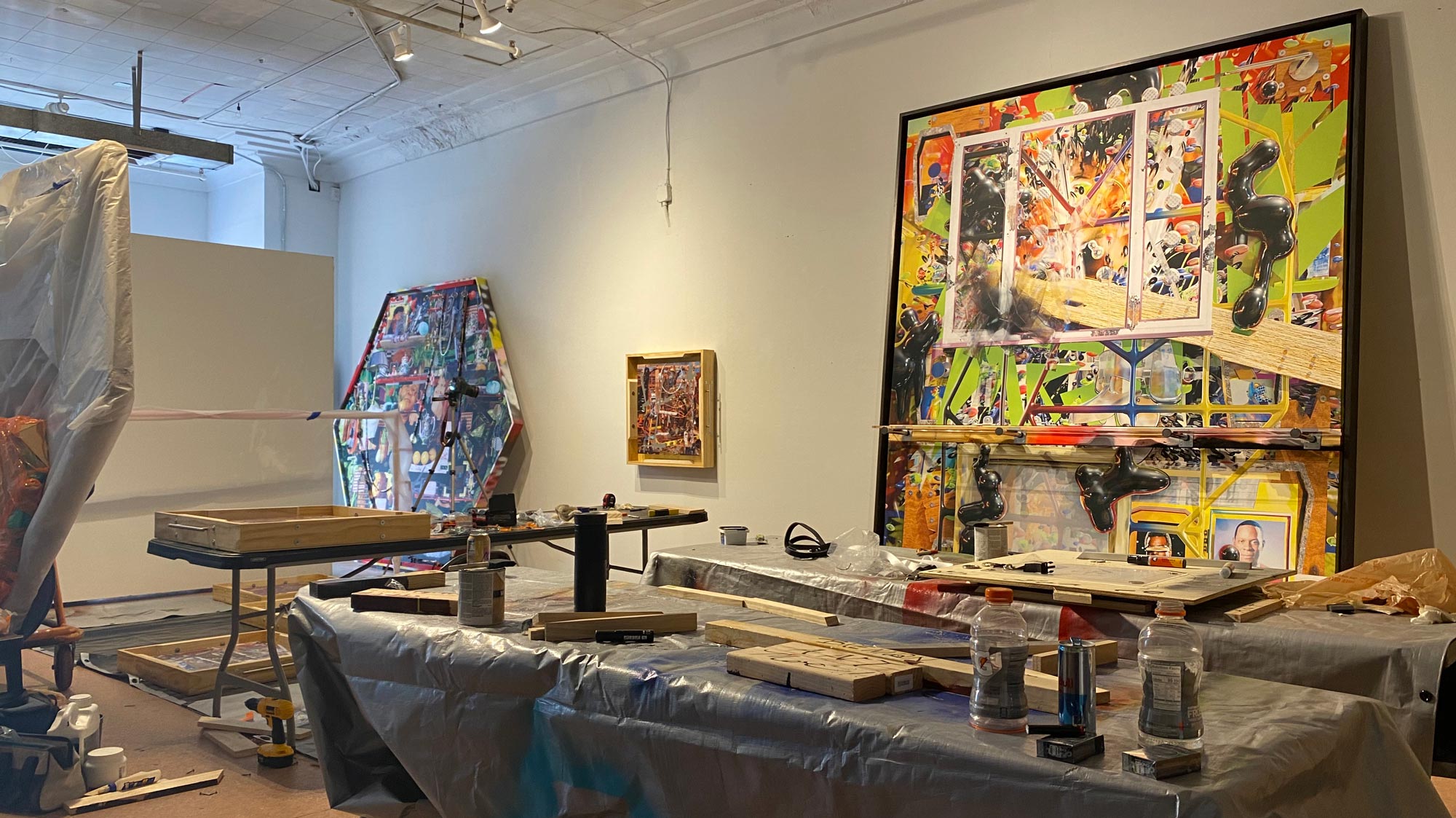Quarantine Bags
Project for ARTFORUM / April 2021

If it is a human thing to do to put something you want, because it’s useful, edible, or beautiful, into a bag, or a basket, or a bit of rolled bark or leaf, or a net woven of your own hair, or what have you, and then take it home with you, home being another, larger kind of pouch or bag, a container for people… then I am a human being after all.
—Ursula K. Le Guin, “The Carrier Bag Theory of Fiction,” 1986
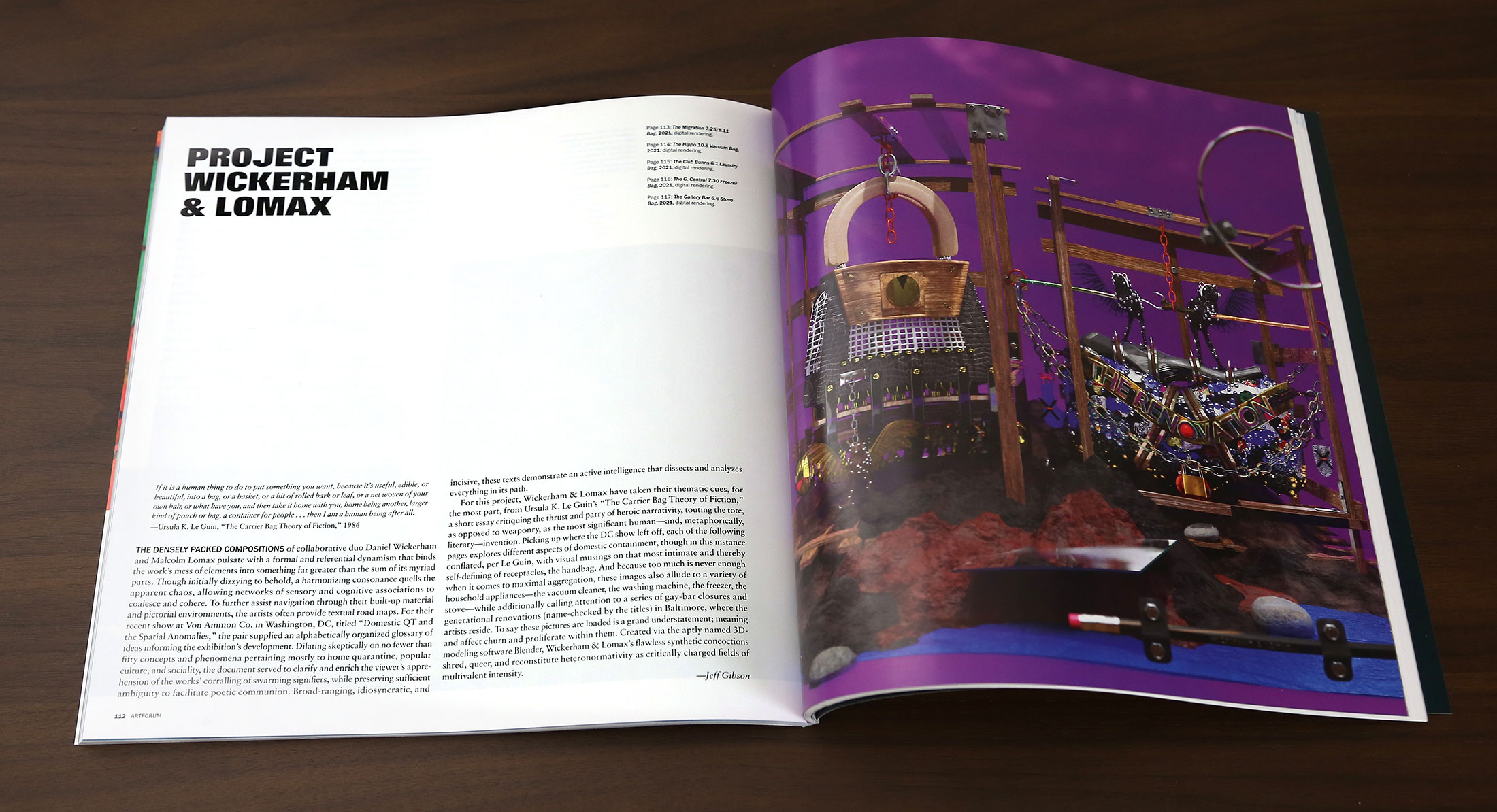

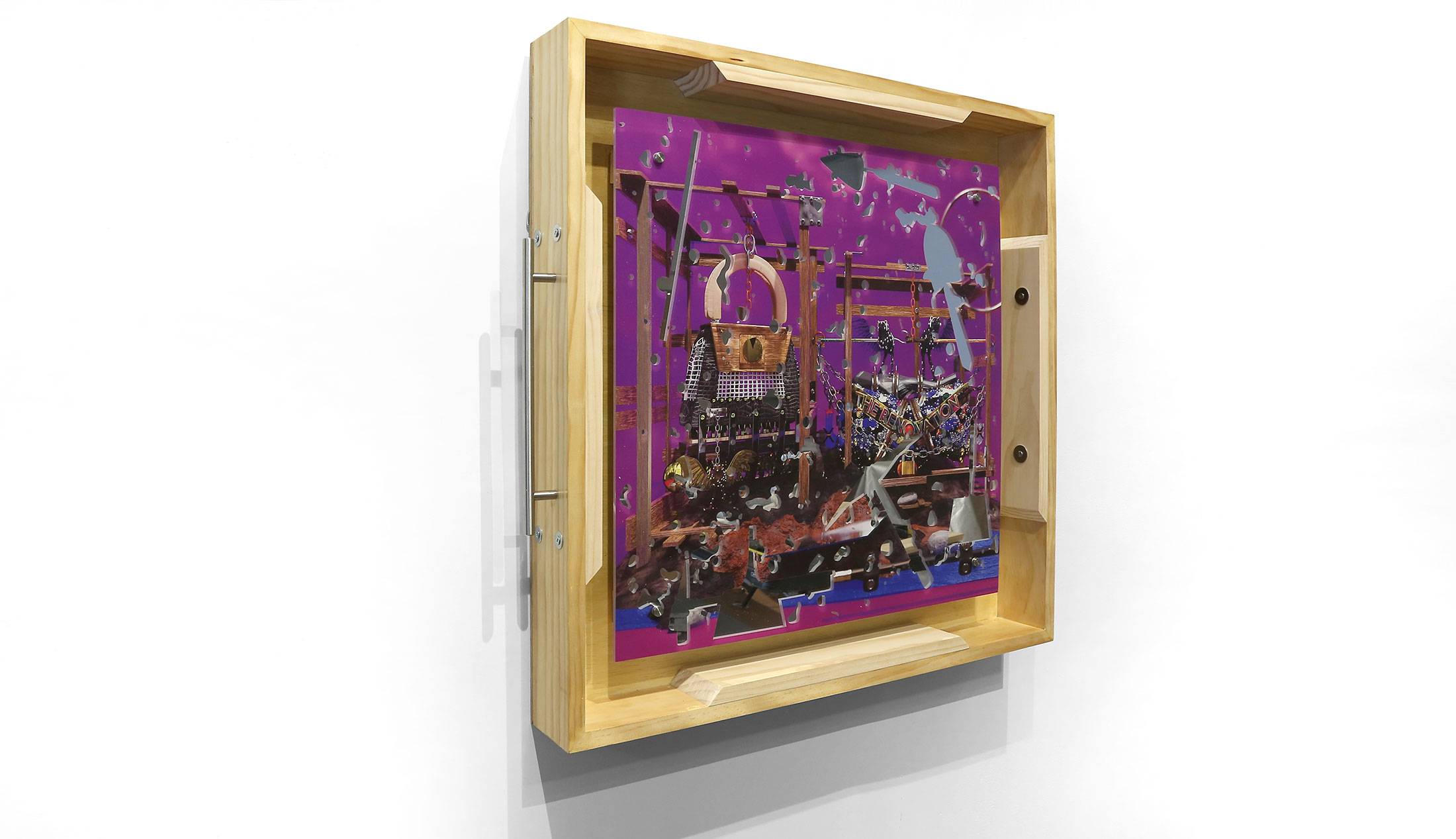
Flatbed direct print on mirrored acrylic with polished edge, zinc hardware, pine tray-frame
30 x 32 x 1 ½ in. (76.2 x 81.28 x 3.81 cm)
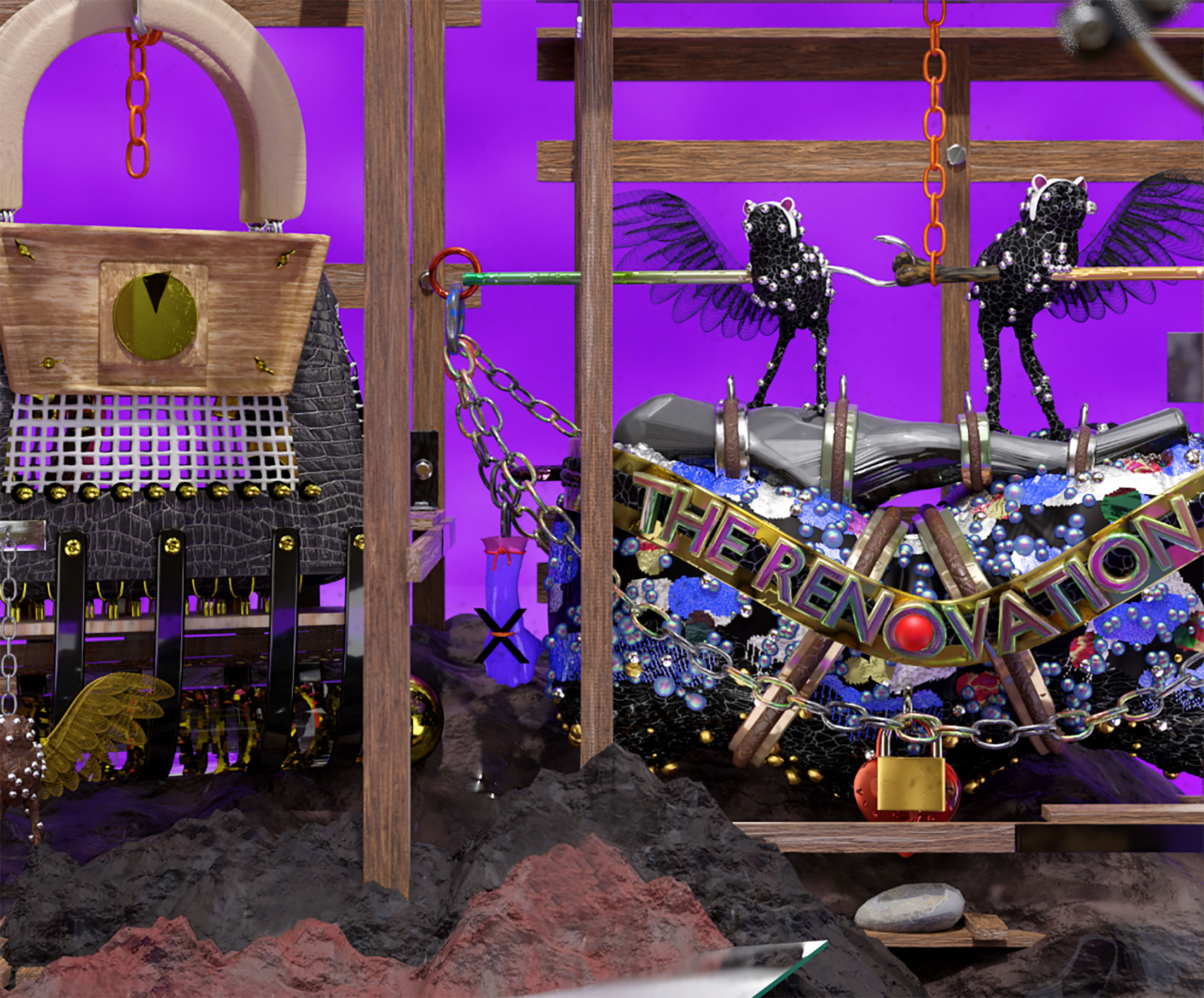
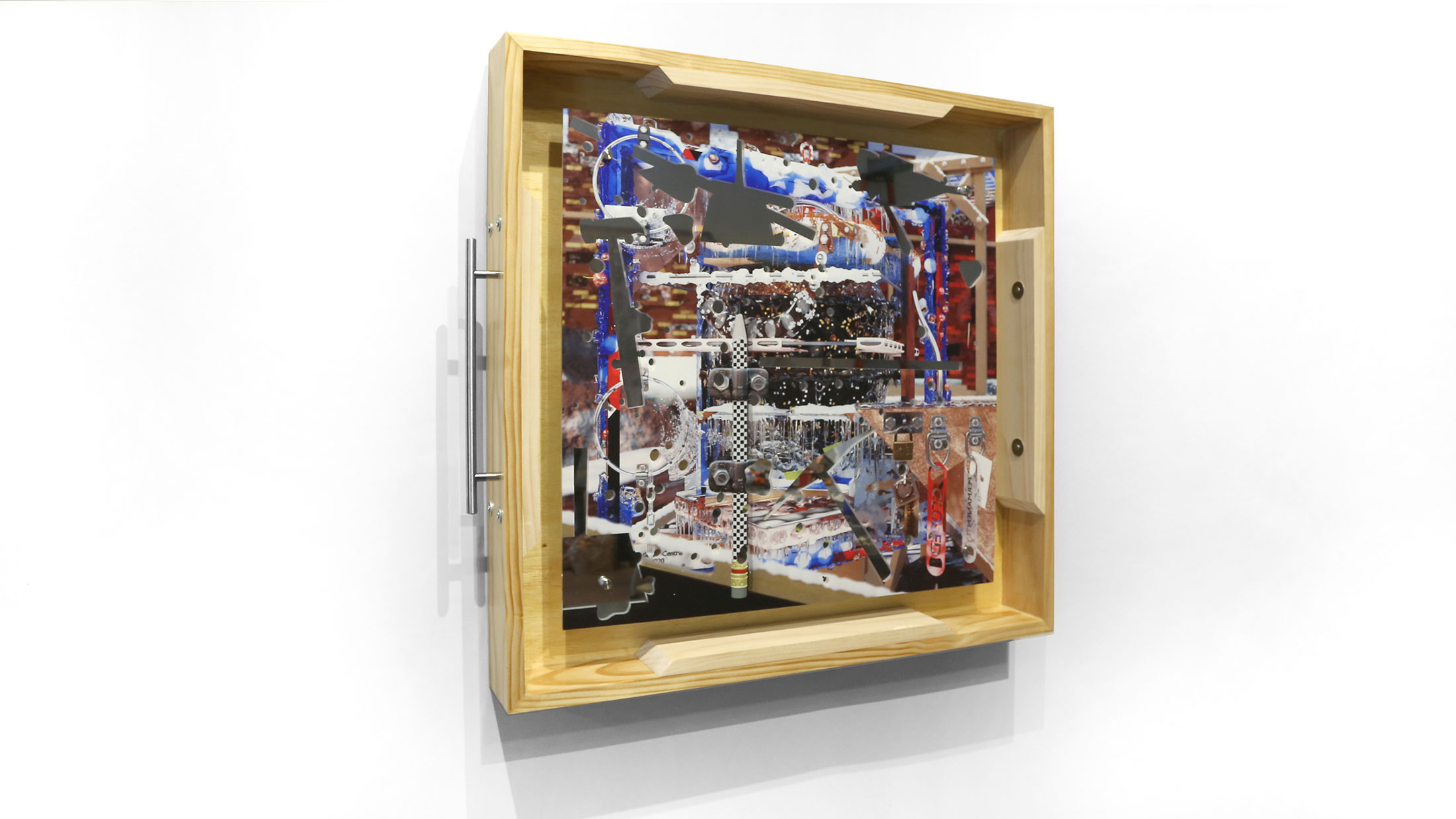
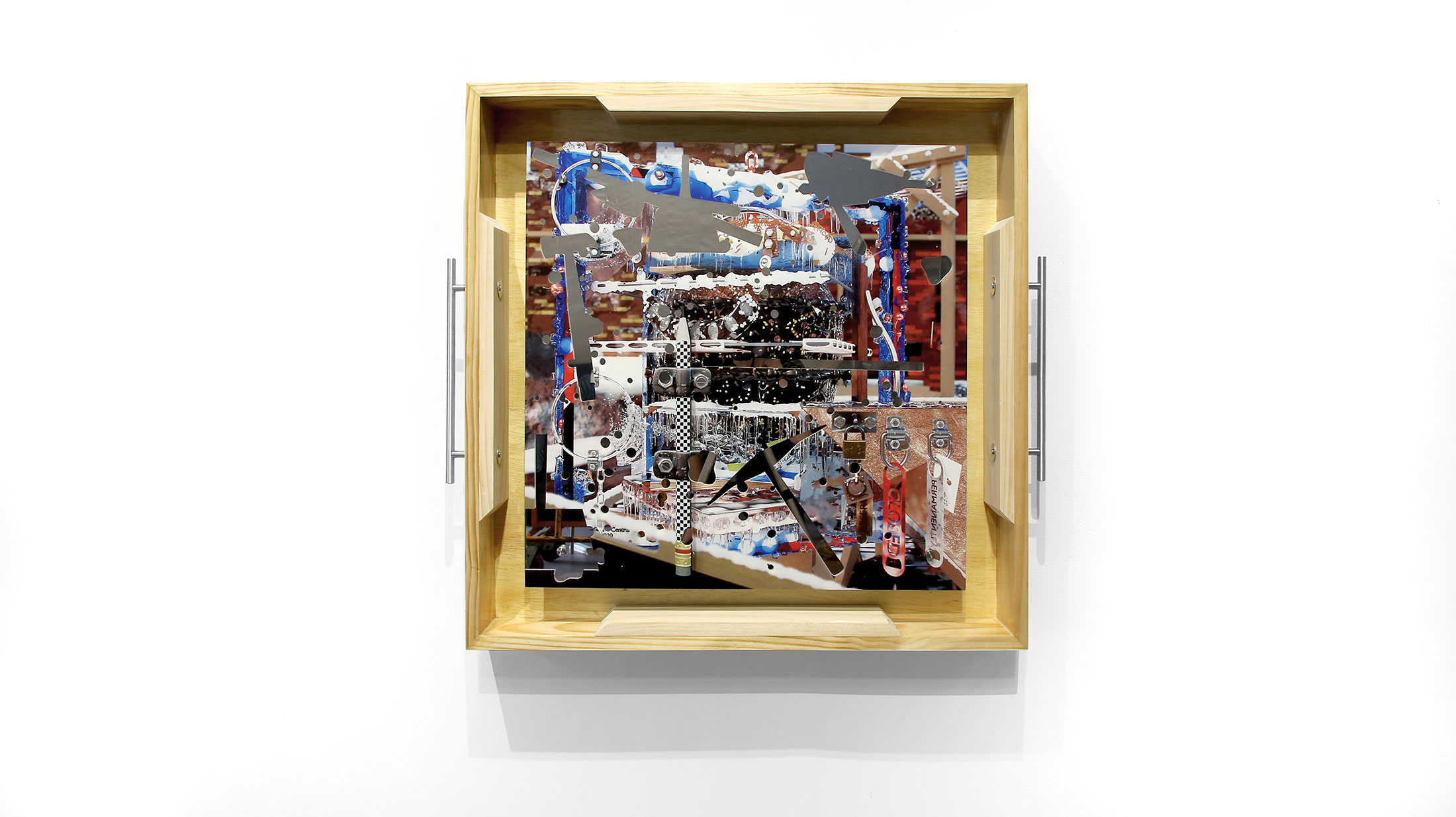
Flatbed direct print on mirrored acrylic with polished edge, zinc hardware, pine tray-frame
30 x 32 x 1 ½ in. (76.2 x 81.28 x 3.81 cm)

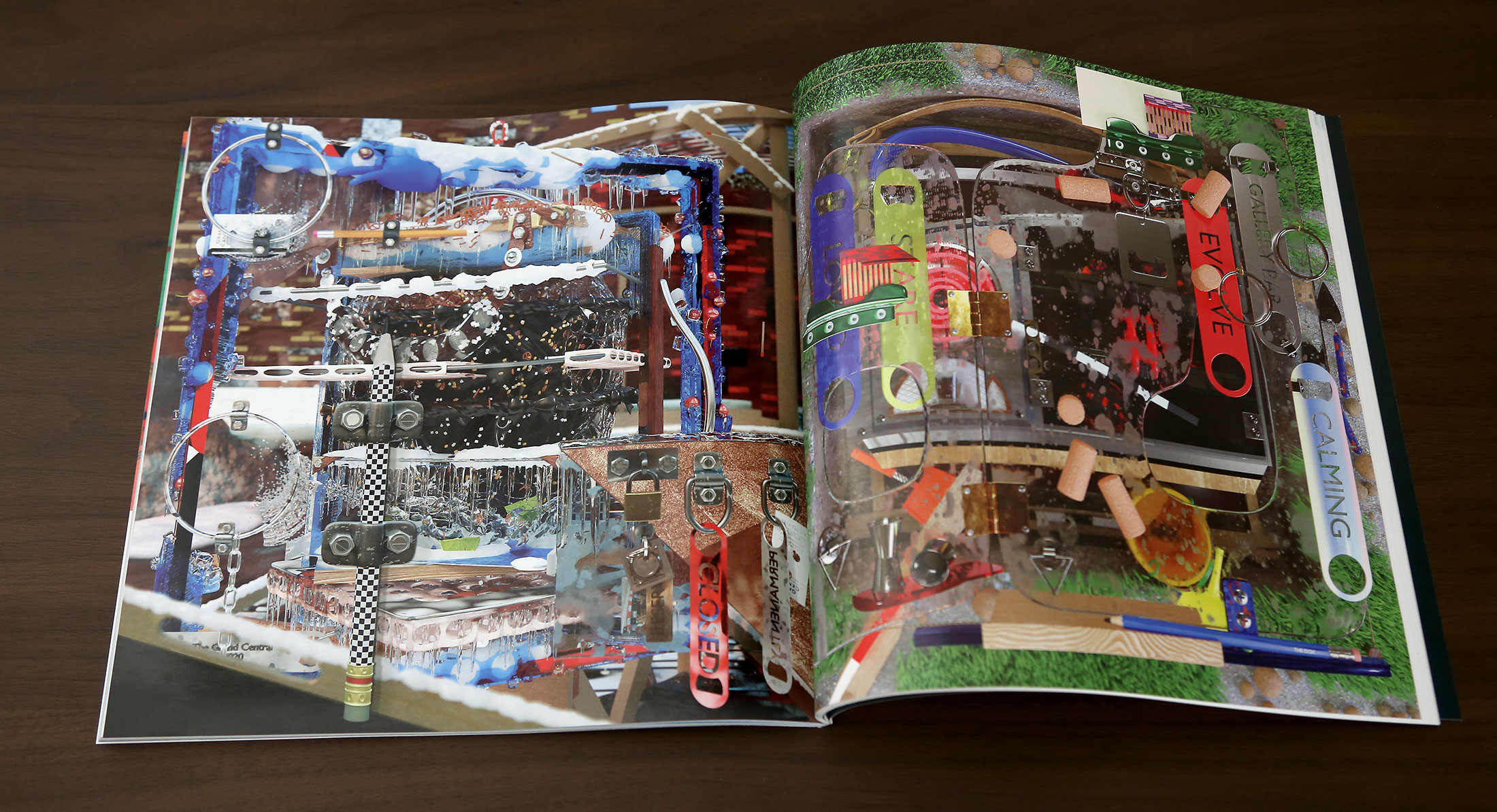
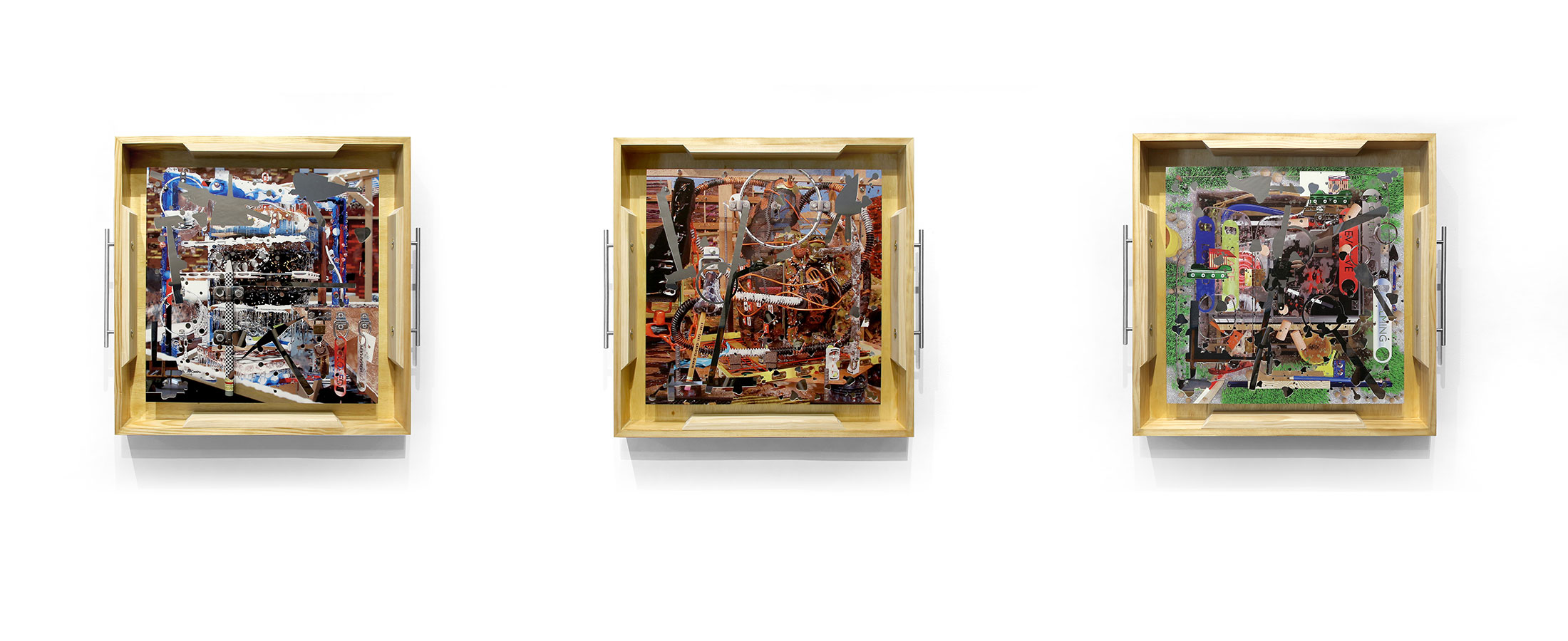
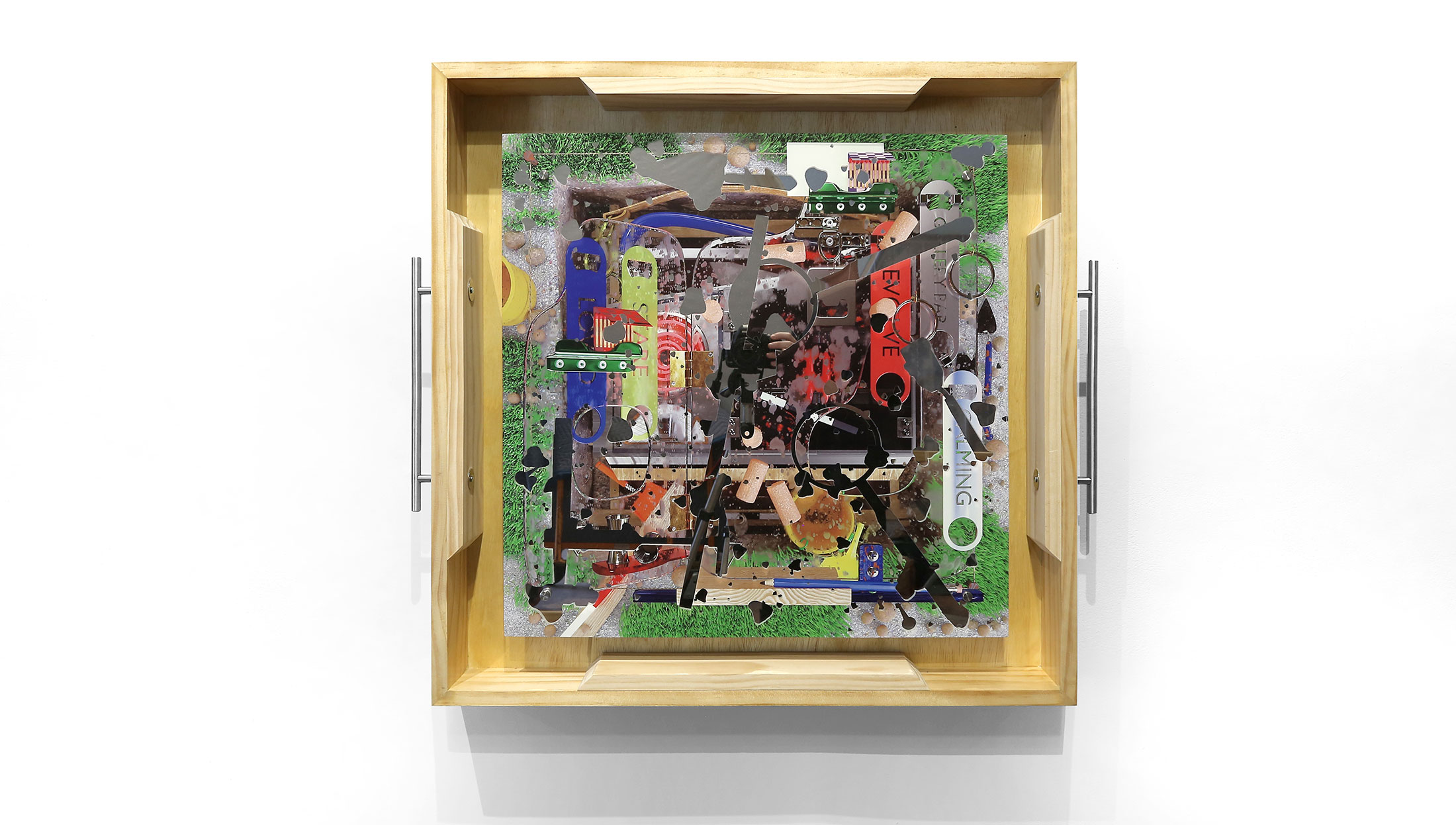
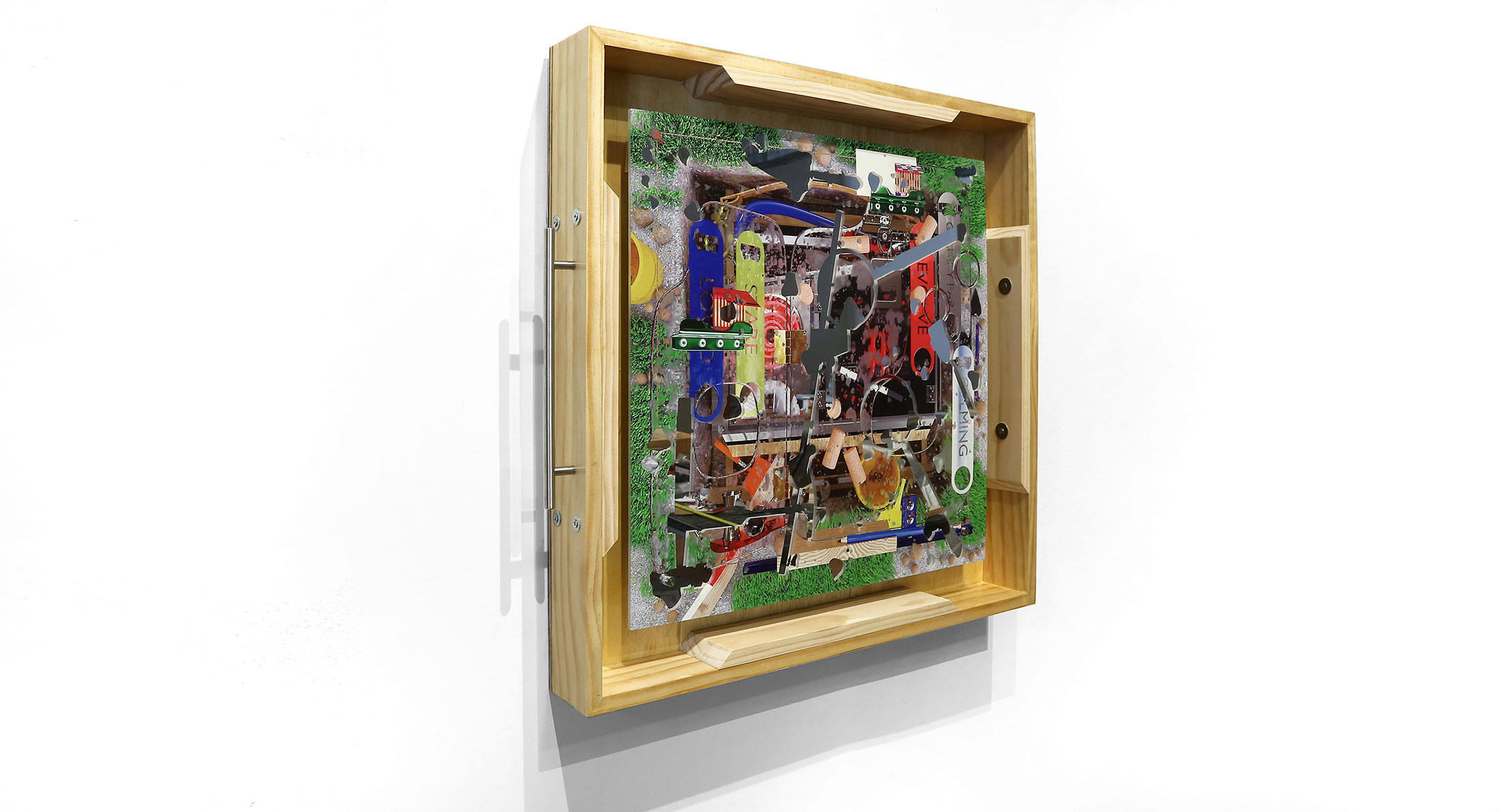
Flatbed direct print on mirrored acrylic with polished edge, zinc hardware, pine tray-frame
30 x 32 x 1 ½ in. (76.2 x 81.28 x 3.81 cm)
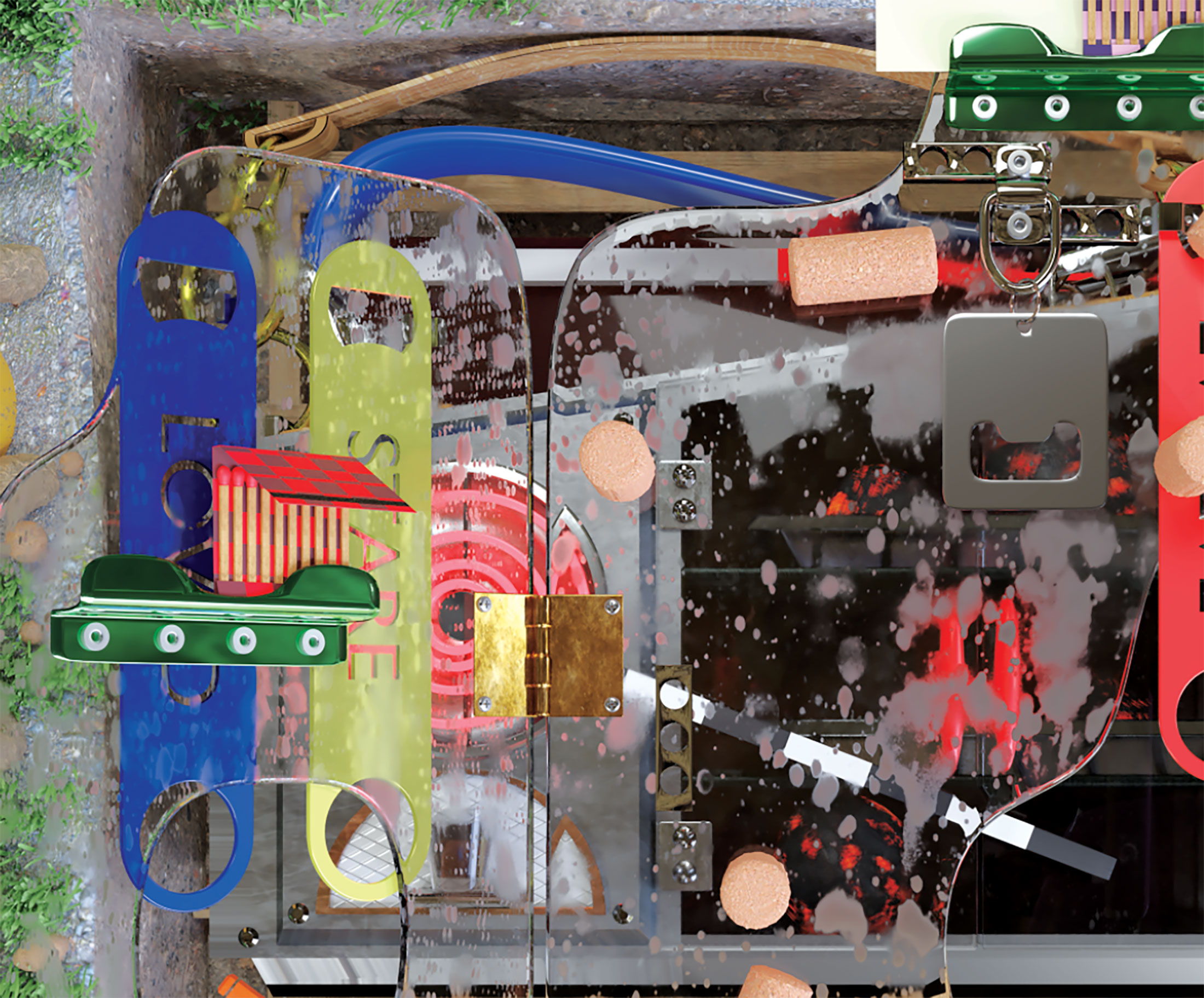
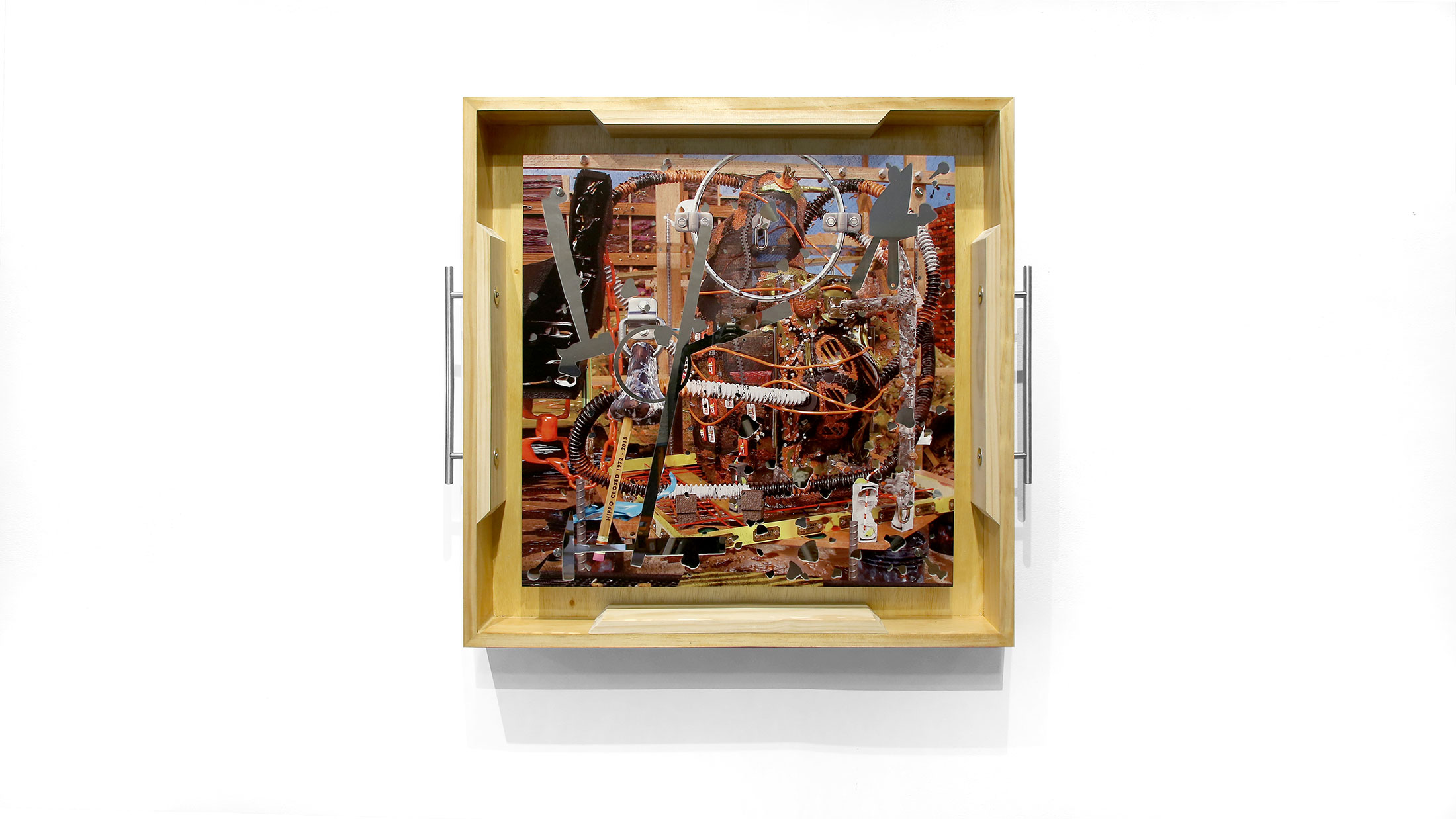
Flatbed direct print on mirrored acrylic with polished edge, zinc hardware, pine tray-frame
30 x 32 x 1 ½ in. (76.2 x 81.28 x 3.81 cm)
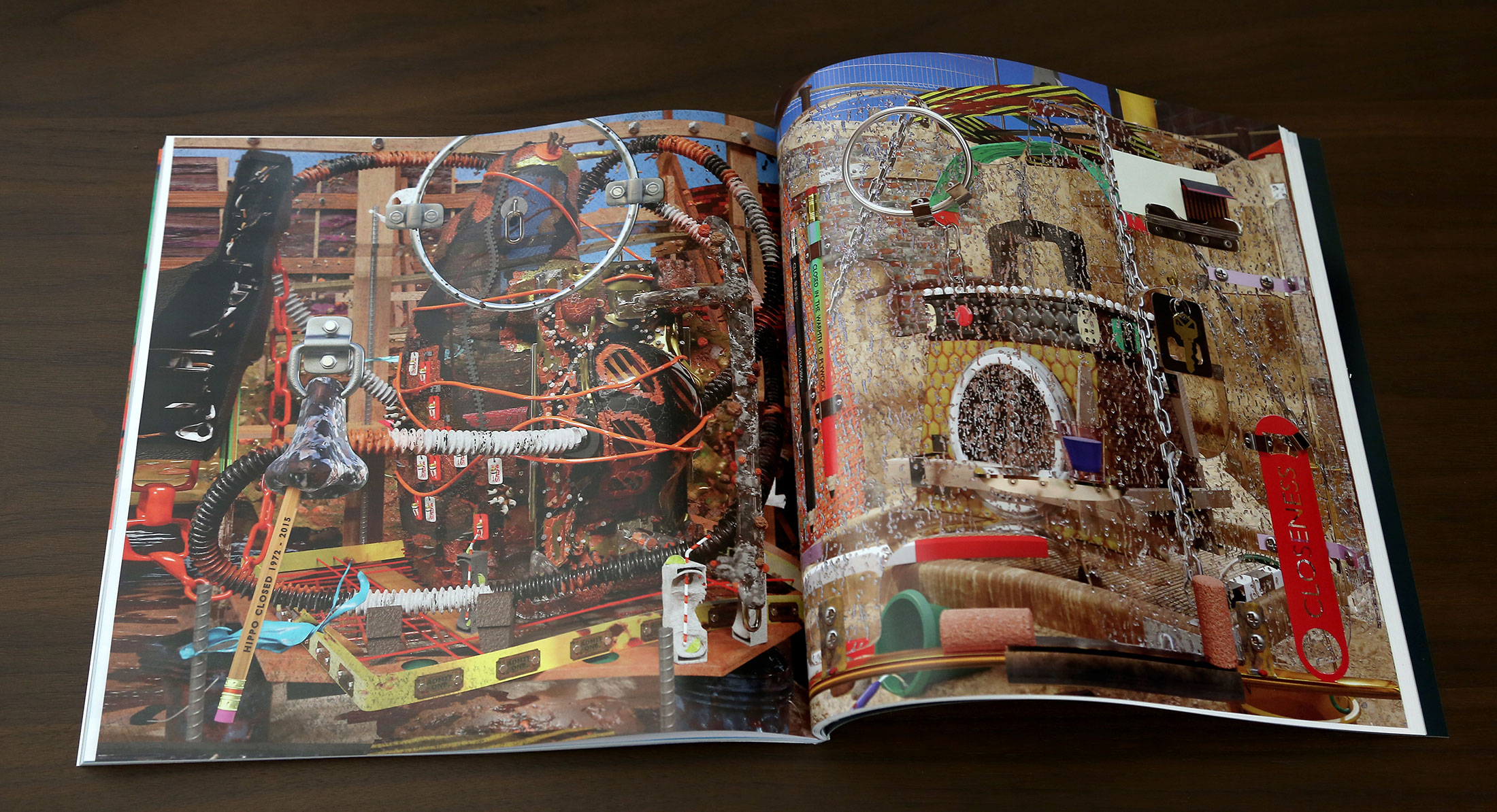
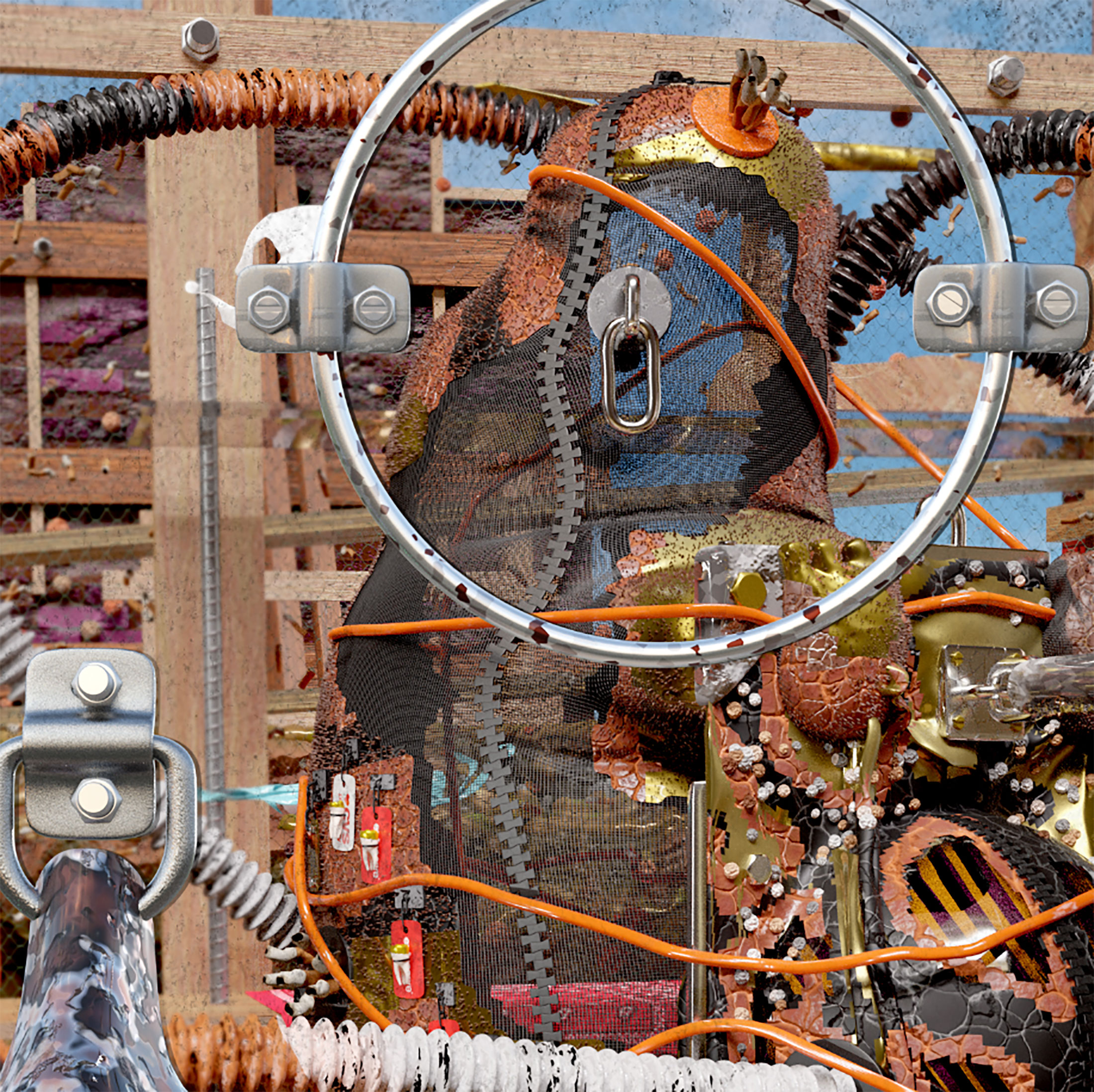
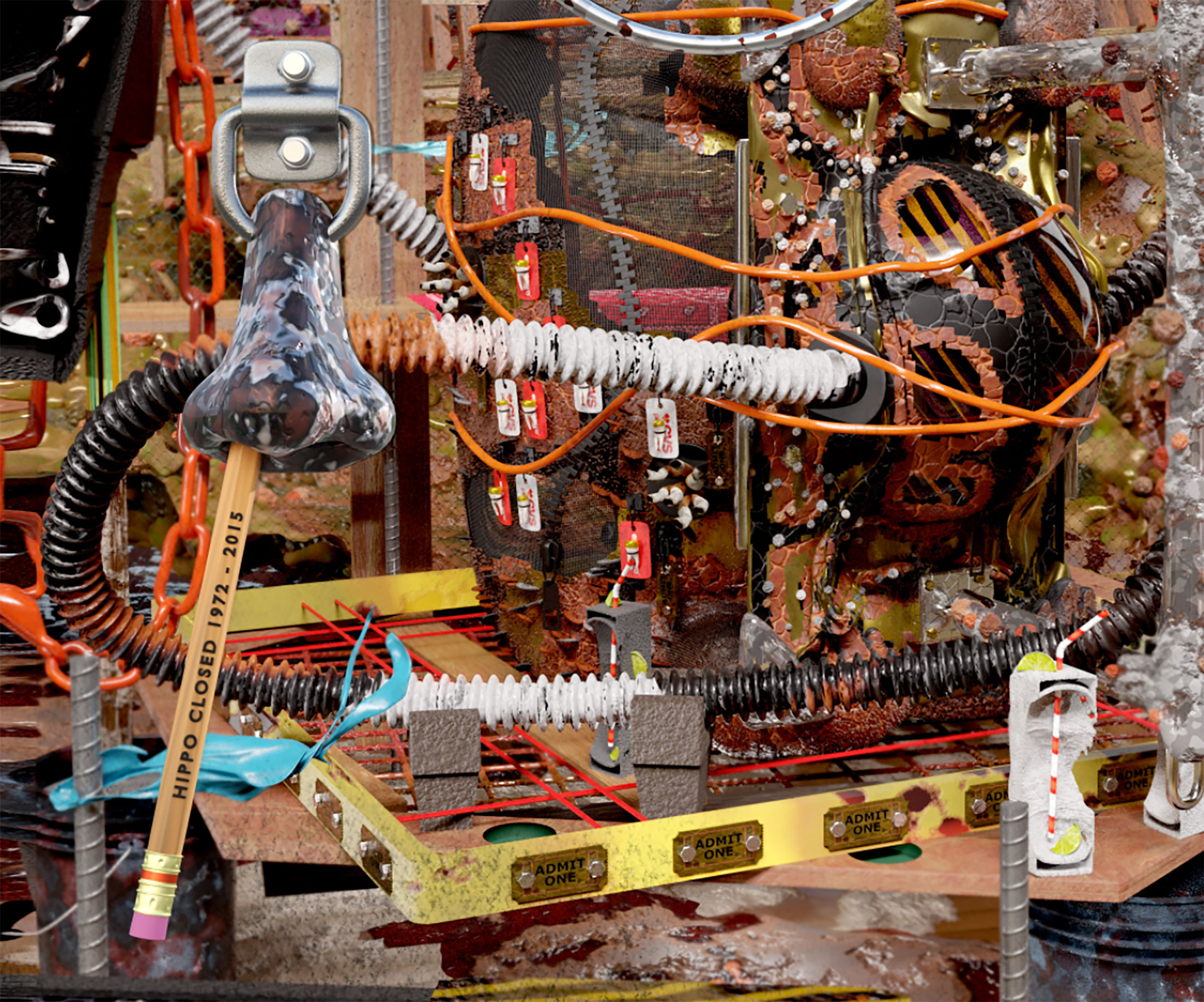
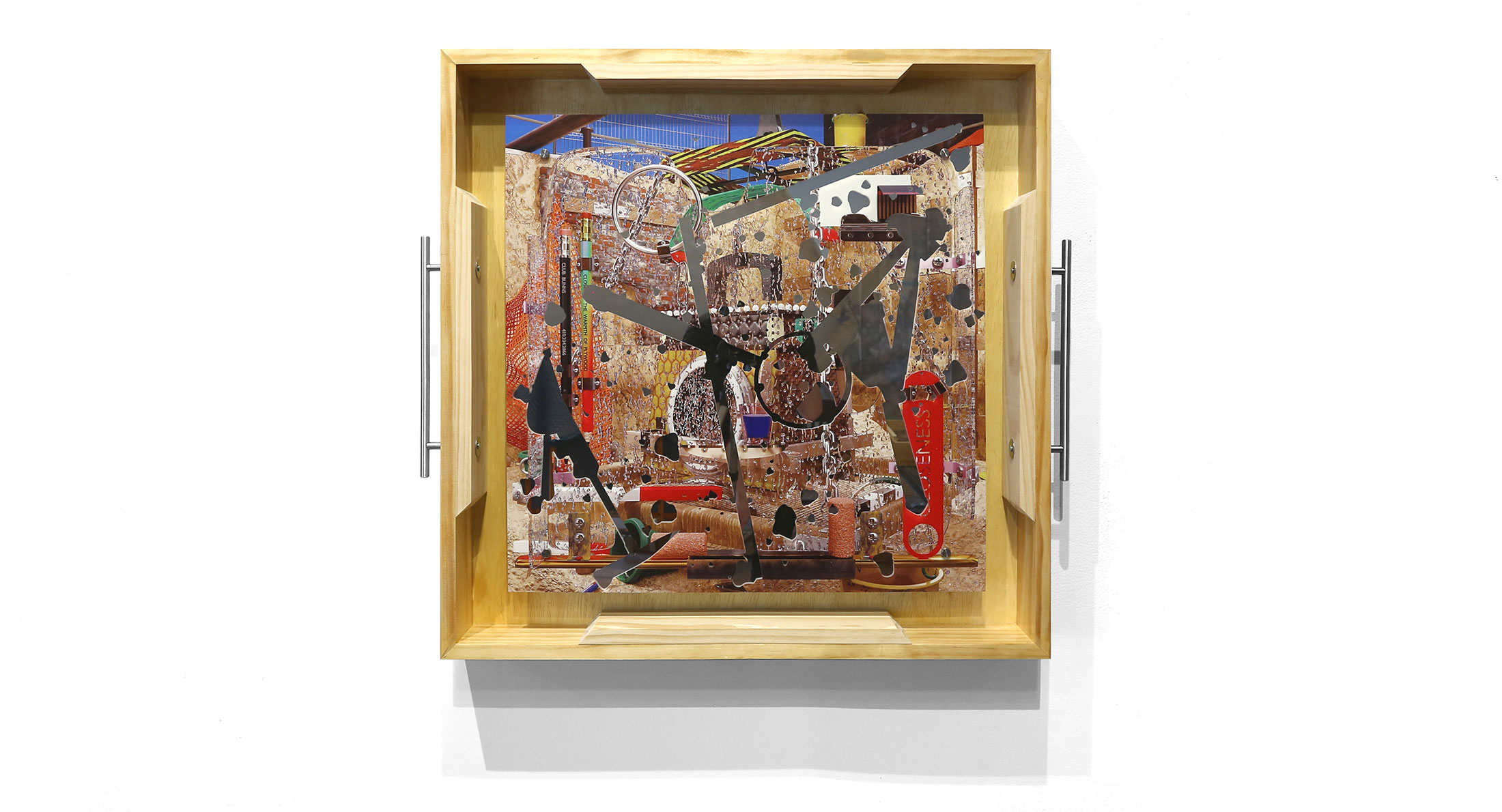
Flatbed direct print on mirrored acrylic with polished edge, zinc hardware, pine tray-frame
30 x 32 x 1 ½ in. (76.2 x 81.28 x 3.81 cm)
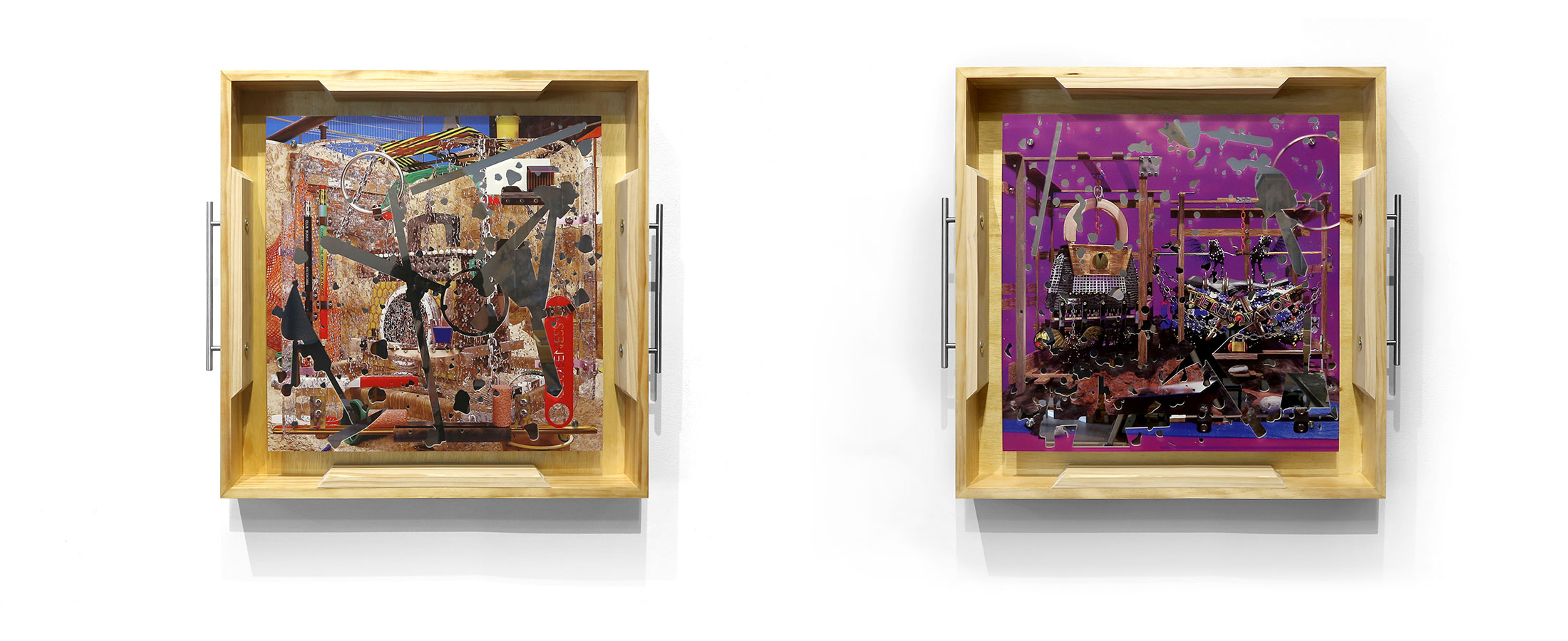
For this project, Wickerham & Lomax have taken their thematic cues, for the most part, from Ursula K. Le Guin’s “The Carrier Bag Theory of Fiction,” a short essay critiquing the thrust and parry of heroic narrativity, touting the tote, as opposed to weaponry, as the most significant human—and, metaphorically, literary—invention. Picking up where the DC show left off, each of the following pages explores different aspects of domestic containment, though in this instance conflated, per Le Guin, with visual musings on that most intimate and thereby self-defining of receptacles, the handbag. And because too much is never enough when it comes to maximal aggregation, these images also allude to a variety of household appliances—the vacuum cleaner, the washing machine, the freezer, the stove—while additionally calling attention to a series of gay-bar closures and generational renovations (name-checked by the titles) in Baltimore, where the artists reside. To say these pictures are loaded is a grand understatement; meaning and affect churn and proliferate within them. Created via the aptly named 3D-modeling software Blender, Wickerham & Lomax’s flawless synthetic concoctions shred, queer, and reconstitute heteronormativity as critically charged fields of multivalent intensity.
